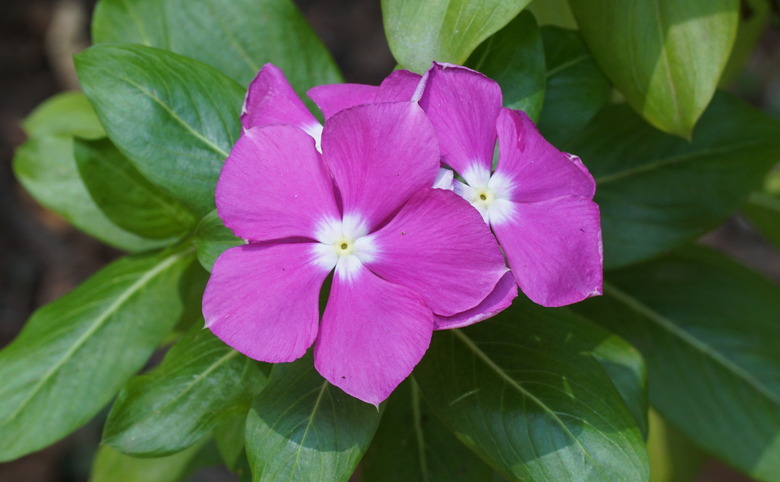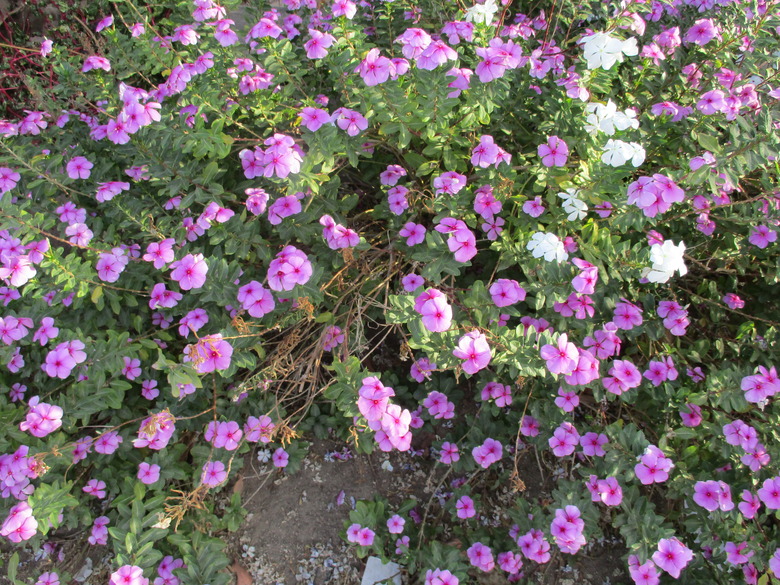Periwinkle (Vinca) Flower Information
If you have taken the time and care to create a home landscape you enjoy, don't go near the common periwinkle or its cousin, big leaf periwinkle (Vinca minor and Vinca major, respectively). These plants are highly invasive and can take over your garden in a nanosecond, creating a dense mat that spreads through any node in contact with the soil.
Warning
Avoid the periwinkle species Vinca major and Vinca minor, which are categorized as invasive species in multiple states.
What you are looking for if you want that sweet periwinkle flower is Madagascar periwinkle (Catharanthus roseus, formerly classified as Vinca rosea and Vinca roseus), a look-alike that plays nicely with the other inhabitants of your garden. All vincas are members of the family Apocynaceae, but the invasive types are more cold-hardy than the desirable varieties.
Plant This Ornamental Vinca
The vinca, or periwinkle, to look for at a nursery is Madagascar periwinkle, also known by the common names annual vinca, rose periwinkle, creeping myrtle and just plain periwinkle, to make things confusing.
About Madagascar Periwinkle
While Madagascar periwinkle is technically a tender perennial, most gardeners grow this flowering plant as an annual, given that its USDA hardiness zones are warm zones 10 to 11. However, it self-seeds, so it may come back each year if you are lucky.
Unlike the invasive varieties, annual vinca cannot be grown as a groundcover. Most annual vinca varieties grow 1 to 2 feet tall with a similar width, although new cultivars have been developed that mimic the behavior of a ground cover.
Plant annual vinca in full sun in acidic soil with a pH of 5.4 to 5.8. Like many plants, vinca requires well-draining soil. Wait until the weather is warm enough, as annual vinca might develop fungal problems in too-cool temperatures. Once established, these plants are drought-tolerant and disease resistant.
Most annual vinca have yellow, pink, white or purple flowers. Their long bloom season is from early spring to fall.
Annual Vinca Cultivars
Some popular cultivars feature a wide range of colors. For example, Apricot Delight (Catharanthus roseus 'Apricot Delight') has white flowers with a tinge of apricot and a red center.
If you are looking for the traditional vinca blue flowers, try Blue Pearl (Catharanthus roseus, 'Blue Pearl'). A newer cultivar, Mediterranean (Catharanthus roseus, 'Mediterranean'), has a more spreading growth habit and reaches just 6 inches tall.
Avoid These Invasive Vincas
Often planted under trees where they enjoy partial shade, Vinca minor and Vinca Major both have arching stems that root wherever they touch the soil. Common names for Vinca minor are Bowles periwinkle, common periwinkle, dwarf periwinkle, lesser periwinkle or just vinca. Vinca major is known as big leaf periwinkle, blue buttons, greater periwinkle, blue periwinkle, or again, just periwinkle.
Tip
Vinca major is a larger, even more aggressive species than Vinca minor, although both should be avoided.
While these evergreen plants can be effective for erosion control and have attractive dark green leaves, they are considered invasive species in multiple U.S. states and other areas in North America because they can quickly take over large areas, pushing out other, more desirable plants.

